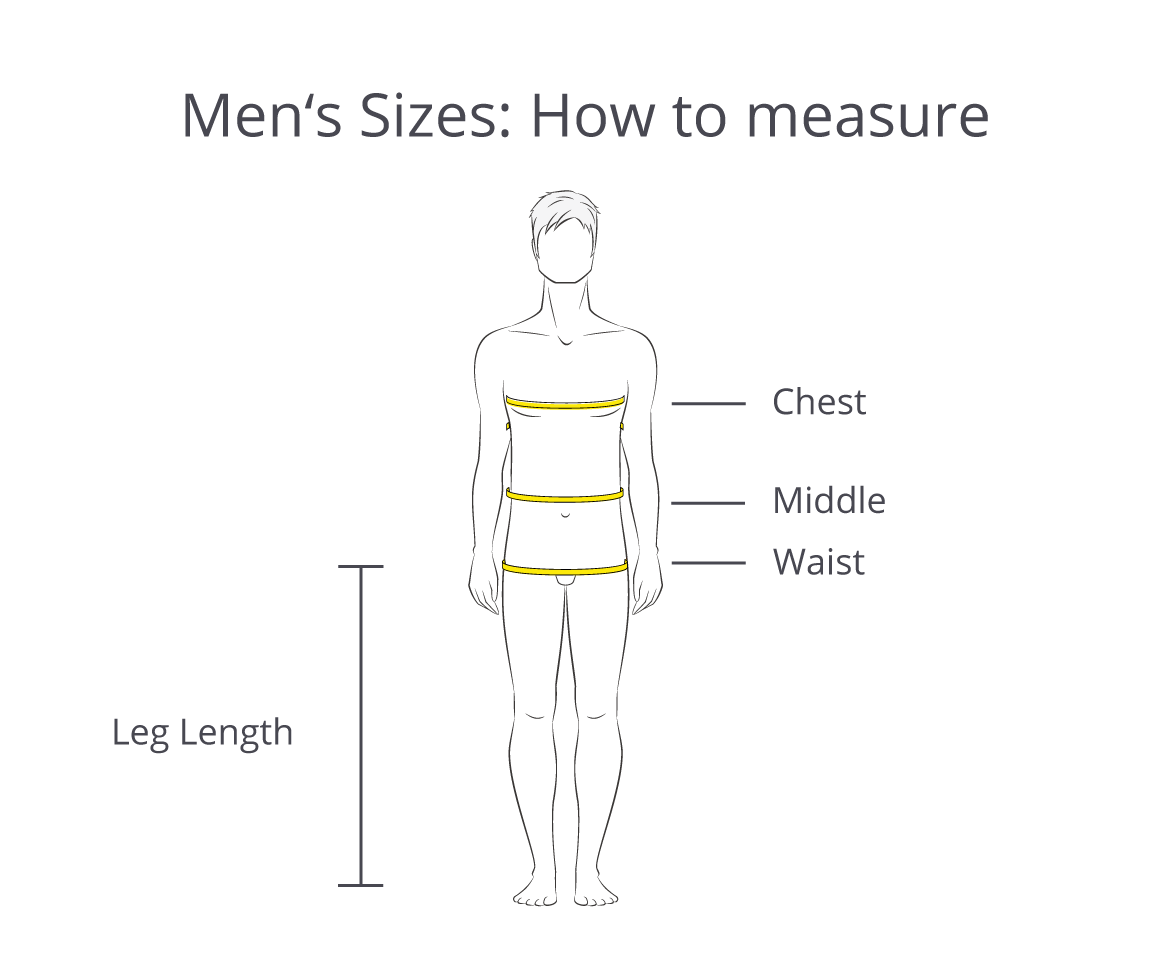We analyzed hundreds of clothing items from various brands, conducting thorough research to produce detailed size charts. Learn about our
methodology and laboratory .
What Men’s size am I? On this site you will find Men’s Sizing Charts, Converters from and to US-sizes and an easy guides how to measure your waist, chest, and other sizes.
Men’s Clothing Size Chart International Men's Sizes US Sizes Men's EU Sizes Men's UK Sizes Men's French Sizes Men's Italian Sizes Men's XS 30 40 30 40 30 XS 32 42 32 42 32 S 34 44 34 44 34 S 36 46 36 46 46 M 38 48 38 48 48 M 40 50 40 50 50 L 42 52 42 52 52 L 44 54 44 54 54 XL 46 56 46 56 56 XL 48 58 48 58 58 XXL 50 60 50 60 60 XXL 52 62 52 62 62
Men’s Pants Size Chart Men’s Pants Sizes (Waist) Size Waist in Inches Waist in Centimeters XS 28-30 71-76 S 30-32 76-81 M 32-34 81-86 L 34-36 86-91 XL 36-38 91-96 XXL 40-44 101-111 3XL 46-50 117-127 4XL 52-54 132-137 5XL 56-60 142-152 6XL 62-64 157-162
Men’s Pants Size (Inseam/Length) Size Length Length in Inches Length in Centimeters Extra Short 27 69 Short 29 74 Regular 31 79 Long 33 84 Extra Long 35 89
Pants Size Conversion Chart for Men US / Internat. Size UK Size Euro Size French Size Italian Size XXS 24 40 43 XS 28 25 40 44 XS 28 26 40 44 S 30 27 42 46 S 30 28 42 46 S 30 29 42 46 M 32 30 44 48 M 32 31 44 48 M 32 32 44 48 L 34 33 46 50 L 34 34 46 50 L 34 35 46 50 XL 38 36 48 52 2XL 42 37 50 54 3XL 46 38 52 56
How to measure pants size?
Men’s Jean Size Chart Men’s Jeans Sizes (Waist) Size Waist in Inches Waist in Centimeters XS 28-30 71-76 S 30-32 76-81 M 32-34 81-86 L 34-36 86-91 XL 36-38 91-96 XXL 40-44 101-111 3XL 46-50 117-127 4XL 52-54 132-137 5XL 56-60 142-152 6XL 62-64 157-162
Men’s Jeans Size (Inseam/Length) Size Length Length in Inches Length in Centimeters Extra Short 27 69 Short 29 74 Regular 31 79 Long 33 84 Extra Long 35 89
Men’s Jeans Size Conversion Chart Waist (Inch) Length (Inch) US / Internat. Euro Waist (CM) Length (CM) 28 30 28/30 40 70 - 72 76 29 30 29/30 42 73 - 75 76 30 32 30/32 44 75 - 77 81 32 32 32/32 46 80 - 82 81 33 32 33/32 48 83 - 85 81 34 32 34/32 50 85 - 87 81 36 34 36/34 52 90 - 92 86 38 34 38/34 54 93 - 98 86 40 34 40/34 56 99 - 105 86 42 34 42/34 58 105 - 110 86 44 34 44/34 60 110 - 113 86
This is how you measure to find the perfect fitting jeans.
Men’s Shirt Size Chart US / Internat. Size US/UK Size Euro Size French Size Italian Size XS 13.5 35 37 38 XS 14 36 38 39 S 14.5 37 39 40 S 15 38 40 41 M 15.5 39 41 42 M 15.5 40 42 43 L 16 41 43 44 L 16.5 42 44 45 XL 17 43 45 46 XL 17.5 44 46 47 XXL 18 45 48 49 XXL 18.5 46 50 52 3XL 19 47 52 54 3XL 19.5 48 52 54 4XL 20 49 54 56 4XL 20.5 50 54 56
For a comprehensive sizing guide on men’s dress shirts, click here .
Men’s Jacket Sizes Body height (inch) Chest width (inch) US size European size Body height (cm) Chest width (cm) 63 - 64 30 - 32 XXXS 40 160 - 164 78 - 81 64 - 65 32 - 34 XXS 42 162 - 166 82 - 85 65 - 66 34 - 36 XS 44 166 - 170 86 - 89 66 - 67 36 - 38 S 46 168 - 173 90 - 93 67 - 68 38 - 40 M 48 171 - 176 94 - 97 68 - 69 40 - 42 L 50 174 - 179 98 - 101 69 - 70 42 - 44 L 52 177 - 182 102 - 105 70 - 71 44 - 45 XL 54 180 - 184 106 - 109 71 - 72 44 - 45 XL 56 182 - 186 110 - 113 72 - 73 45 - 46 XXL 58 184 - 188 114 - 117 73 - 74 46 - 47 XXL 60 185 - 189 118 - 121 74 - 75 47 - 48 3XL 62 187 - 191 122 - 125 75 - 76 48 - 49 3XL 64 189 - 193 126 - 129 76 - 77 49 - 50 4XL 66 191 - 194 130 - 133 77 - 78 50 - 51 5XL 68 193 - 196 134 - 137 78 - 79 51 - 52 5XL 70 195 - 198 138 - 141 79 - 80 52 - 53 6XL 72 197 - 200 142 - 145
This is how you measure to find the perfectly fitting jacket.
Men’s Belt Size Chart General Belt Size Numerical Belt Size Waist Measurement (inches) Length of Belt XS 30 26.5-28 28-30 S 32 28.5-30 31-32 M 34 30.5-32 33-34 M 36 32.5-34 35-36 L 38 34.5-36 37-38 L 40 36.5-38 39-40 XL 42 38.5-40 41-42 XL 44 40.5-42 43-44 2XL 46 42.5-44 45-46 3XL 48 44.5-46 47-48 4XL 50 46.5-48 49-50
Measurement Guide for Men Find our detailed how to measure inseam and how to measure waist size here.
Insights from our Lab This is how we work: watch the video and see how we measure and research in our lab.


